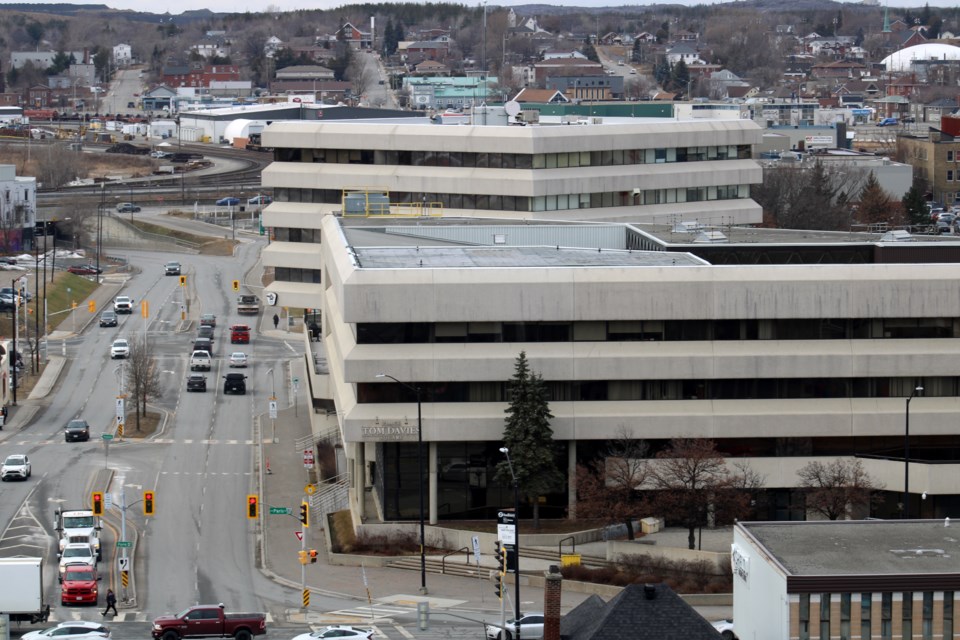To remain at a status-quo state of investment, the City of Greater Sudbury is slated to see annual tax levy increases averaging 3.9 per cent during the next decade.
This, according to the city’s latest long-term financial plan update city council received during Tuesday’s finance and administration committee meeting.
It was one of myriad insights into municipal finances made between this meeting and the audit committee meeting that took place earlier in the day.
Under this base model plan, annual tax levy increases are expected to start out higher and ease down to 2.4 per cent by 2034 to create the 3.9-per-cent average during the 10 years. Next year’s anticipated tax levy increase was previously set at 7.3 per cent, until city council asked last month for staff to pare it down to within a 4.9-per-cent limit (which will require them to cut $8.5 million from the base budget).
The 2026 tax levy increase is projected at 6.3 per cent under the base model, with subsequent annual increases coming in lower during subsequent years.
Alongside this 3.9-per-cent average annual tax levy increase for 10 years are 4.8-per-cent annual increase in water/wastewater rates which have already been in place for a few years.
Although this 3.9-per-cent base model maintains the city’s status quo investments, it only partially addresses the city’s infrastructure spending gap, estimated at approximately $130 million per year to keep municipal assets at their current overall condition. The most visible example of the city’s degrading infrastructure are roads, which are underfunded by approximately $45 million per year and are en route to slip from “fair” to “poor” condition by 2030.
Baked into the 3.9-per-cent average annual tax levy increases in the base model is a 1.5-per-cent infrastructure renewal levy city council added during 2024/25 budget deliberations, which is projected to raise $86 million over five years.
Two alternative options for the 10-year financial plan include an “Addressing Asset Management” scenario in which the average tax levy increase would be 5.9 per cent over 10 years, and a “Capital and Growth” scenario in which the 10-year average tax levy increase is 8.7 per cent.
The Addressing Asset Management scenario would add $80 million to the city’s capital budget in 2025 (a 29.7 per cent increase that year, with lower increases in subsequent years to average it out to 5.9 per cent).
The Capital and Growth scenario would add $50 million in additional capital expenditure starting in 2025 and lasting until 2029, which would effectively fill the city’s infrastructure gap. The first few of these annual tax levy increases would be 23.2 per cent, 17.4 per cent, 15 per cent, 12.6 per cent and 9.4 per cent before dropping to 2.2 per cent and lower.
Residential taxes per household are $3,496 in 2024, and under the base model would increase to $5,447 by 2034. Under the Addressing Asset Management plan it would hit $6,405 by 2034, and under the Capital and Growth plan it would reach $8,328.
It’ll be up to city council to decide how to proceed, but the base model (3.9-per-cent average annual tax levy increase over 10 years) is currently the plan.
“This committee and council will determine the services and service levels they wish to deliver in the future, the pace and intensity of capital renewal, timing and scope of new strategic assets it wants to invest in, and ultimately, what level of taxation is appropriate in the coming years,” city Corporate Services general manager Kevin Fowke said during Tuesday’s meeting.
Some other highlights from Tuesday’s meetings as it relates to municipal finances were:
- Despite upcoming borrowing of an additional $259.4 million ($124.4 million in the 2024-28 capital plan for high-priority infrastructure and $135 million for a downtown events centre), the city remains within their internal policy limit. At the end of 2023, the city’s total long-term liabilities were approximately $325.9 million. Debt per household was $927 in 2019, and is projected to peak at $8,029 by 2026 before it begins to fall.
- The city’s current financial plan will see city reserves decline from $2,912 per household in 2023 to less than $832 per household in 2029. This is much lower than the average of $3,807 among municipal comparators. By introducing a one-per-cent levy in 2027, the city plans on increasing reserves to normal levels by 2034. “Meanwhile, the corporation has lower flexibility, which could constrain its ability to address unplanned financing requirements, such as to match funding from other orders of government,” according to a municipal report by City Financial Planning and Budgeting manager Liisa Lenz. “Similarly, low reserve levels could prompt an increased reliance on debt financing or decisions to reduce the timing and/or extent of capital renewal activity.”
- New accounting standards mean the city’s financial statements must now reflect a $100-million asset retirement obligation for asbestos abatement for buildings constructed prior to 1995, and $24 million for landfill closure and post-closure costs. These aren’t immediate expenses, but will need to be paid by the time assets are decommissioned, and are now being accounted for.
- City investment income hit $37.9 million in 2023.
- Last year’s year-end surplus was $3.1 million against an operating budget of $782.8 million.
Tyler Clarke covers city hall and political affairs for Sudbury.com.
